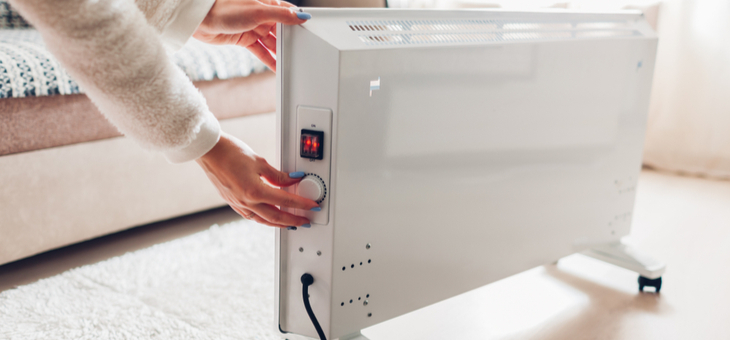Power bills rose 7 per cent last year despite a 4.8 per cent drop in wholesale power prices.
Pandemic lockdowns led to a 10 per cent spike in electricity use, according to the latest National Electricity Market Report from the Australian Competition and Consumer Commission (ACCC).
ACCC chairman Rod Sims says he expects the price reductions to flow through to households and small businesses even if people continue to work from home.
“COVID-19 had a major effect on electricity use last year,” he said.
“Many households that were already experiencing financial difficulty had higher electricity bills to pay, and although lower bills for small businesses would normally be something to celebrate, it wasn’t a welcome outcome in the context of a pandemic recession.
“We expect 2021 to be a better year for households and small businesses as large reductions in the wholesale cost of electricity continue to flow through to people’s bills,” Mr Sims told Nine.
The federal government’s Prohibiting Energy Market Misconduct (PEMM) law and Default Market Obligation rules mean suppliers must pass on discounts.
Read more: Electricity bills explained
The ACCC is investigating several electricity retailers’ prices to see if recent wholesale price reductions are being passed on to consumers.
The National Energy Market Report says wholesale electricity costs – the price retailers pay for energy from generators – dropped by 50 per cent from mid-2019 to early 2021.
However, it says that 7 per cent of households are still on expensive standing offers.
Mr Sims says he is worried because standing offers are 18 per cent more expensive than market offers in 2020.
Consumers can save could up to $200 in electricity bills per year by switching plans.
Finder.com says: “If you’re wondering how you got on a standing offer in the first place, the simplest explanation is that your market offer expired and you’re no longer getting any discounts or incentives.
“Standing offers were originally intended to be a safety net for customers to get a basic service at a reasonable price, but over time they became some of the highest-priced plans.”
Canstar Blue says consumers on standing offers are missing out on hundreds of dollars in savings.
“It sounds cliche but now’s a great time for customers to review their energy plans, especially if they’re spending more time at home,” said Canstar Blue energy editor Jared Mullane.
“Using more energy is an unfortunate reality with lockdowns and more people working from home, so it’s important for bill payers to check the rates listed on their bills.
Read more: Regulator powers savings
“It could be worthwhile looking at plans that lock in rates. This way, customers know their prices won’t change for a set period of time, helping them better manage their household budgets.”
Mr Mullane says there is “no guarantee” that the government’s new rules will mean savings are passed on, so consumers must shop around. To do so, analyse the usage data on your electricity bill to compare prices, he says.
Compare Club’s June 2021 Bill Shock Index found that while it is clear that energy savings are there for the taking, older Australians are the least likely to take advantage of energy comparison services.
“Having a ‘set and forget’ approach can cost hundreds if not thousands of dollars, especially if you’re leaving years between comparing and switching,” said Compare Club CEO Andrew Davis.
“What surprises us most is that 50 per cent of over 55s choose to keep their heater off in winter to save money but only 8 per cent actually consider switching energy plans.
“Given that there can often be a difference of around $1500 between the most expensive and most affordable deals, we’d like to see more older Aussies consider switching, seeing as they’re the ones who stand to save the most.”
Professor Renate Egan, from University of NSW engineering, told news.com.au there is “no better investment at the moment” than installing solar panels on your roof.
She says the panels are cheap and recommends the average Australian home install as many solar panels as possible.
“The average solar panel system size in Australia is now eight kilowatts, which is probably something like 20 or 30 panels,” she said.
Read more: Australians miss out on power savings
Such a system would produce enough power for “nearly every day of the year for a three-person home that uses, on average, around 15kWhr/day”.
Prof. Egan says an eight kilowatt solar panel system can save a consumer $500 per quarter and the panels start to pay themselves off in 4.7 years.
“This system would cost around $7500 and would save around $1800 a year (in electricity bills),” she said.
Finder says that in 2020, solar owners paid 29 per cent less than non-solar homes, after accounting for any feed-in tariffs.
“This is credit that customers receive for any unused electricity that their solar power system sends back to the power grid,” news.com.au reports.
“It meant solar owners were saving $94 per quarter on their electricity bills, or $376 for the year.”
Are you aware of how to save on your electricity bills? Do you regularly check if you could be on a better deal? Share your experience in the comments section below.
If you enjoy our content, don’t keep it to yourself. Share our free eNews with your friends and encourage them to sign up.

